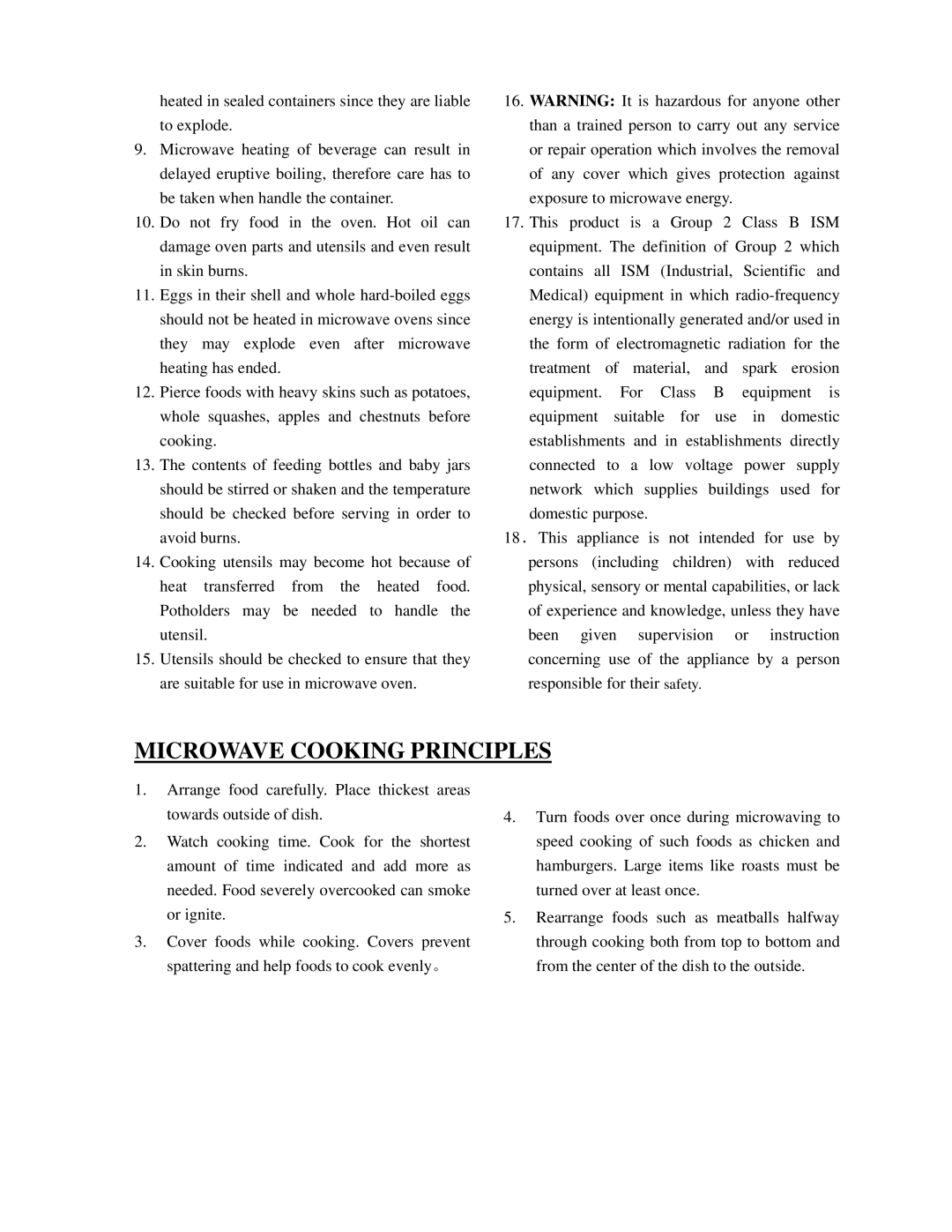heated in sealed containers since they are liable to explode.
9.Microwave heating of beverage can result in delayed eruptive boiling, therefore care has to be taken when handle the container.
10.Do not fry food in the oven. Hot oil can damage oven parts and utensils and even result in skin burns.
11.Eggs in their shell and whole
12.Pierce foods with heavy skins such as potatoes, whole squashes, apples and chestnuts before cooking.
13.The contents of feeding bottles and baby jars should be stirred or shaken and the temperature should be checked before serving in order to avoid burns.
14.Cooking utensils may become hot because of heat transferred from the heated food. Potholders may be needed to handle the utensil.
15.Utensils should be checked to ensure that they are suitable for use in microwave oven.
16.WARNING: It is hazardous for anyone other than a trained person to carry out any service or repair operation which involves the removal of any cover which gives protection against exposure to microwave energy.
17.This product is a Group 2 Class B ISM
equipment. The definition of Group 2 which contains all ISM (Industrial, Scientific and Medical) equipment in which
18.This appliance is not intended for use by persons (including children) with reduced physical, sensory or mental capabilities, or lack of experience and knowledge, unless they have been given supervision or instruction concerning use of the appliance by a person responsible for their safety.
MICROWAVE COOKING PRINCIPLES
1.Arrange food carefully. Place thickest areas towards outside of dish.
2.Watch cooking time. Cook for the shortest amount of time indicated and add more as needed. Food severely overcooked can smoke or ignite.
3.Cover foods while cooking. Covers prevent spattering and help foods to cook evenly。
4.Turn foods over once during microwaving to speed cooking of such foods as chicken and hamburgers. Large items like roasts must be turned over at least once.
5.Rearrange foods such as meatballs halfway through cooking both from top to bottom and from the center of the dish to the outside.
